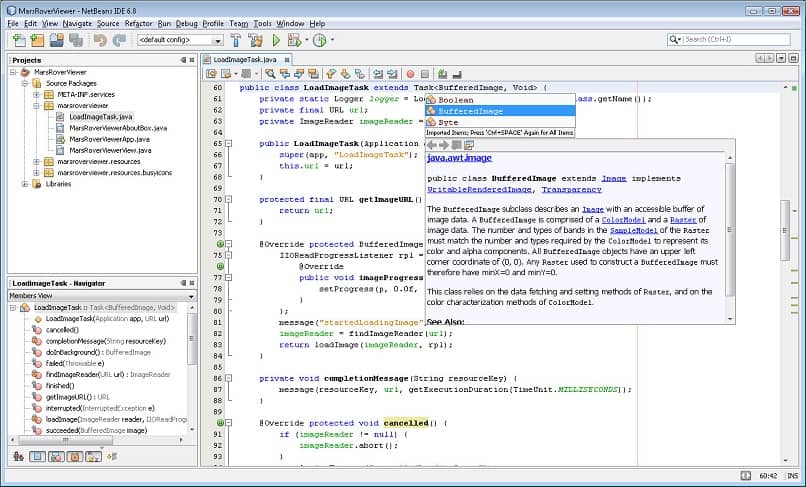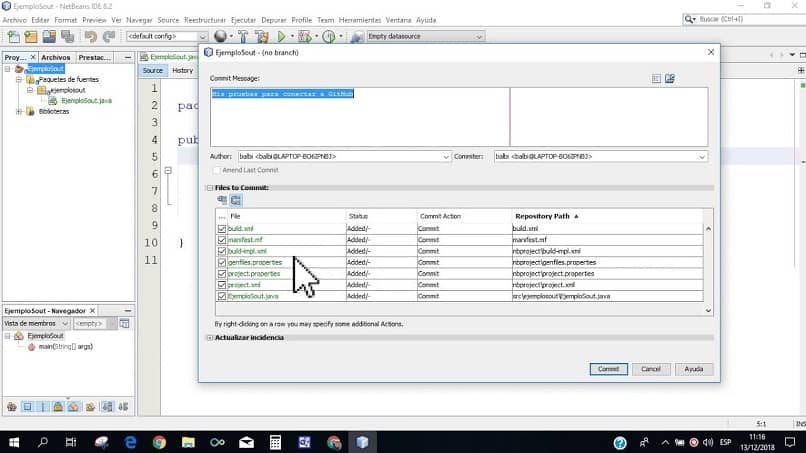Creating a NetBeans project can be a very reliable option to develop Java programming in a very simple way. One of the biggest benefits of this platform is to export the language sheet to other pages. This is for the purpose of publishing or backing it up. Just like uploading a Java project created with NetBeans to the GitHub platform.
Although there are multiple sites on the Internet that offer this type of service, none is as reliable or recognized as GitHub. Currently, this space enabled for the creation of codes is being addressed by Microsoft.
This company is recognized worldwide for working with software. Being another reason why many users decide to publish their projects there. In order to arouse their interest and get good rewards from it.
Regarding Java, it is a very popular and essential package and type of programming for the development of applications, pages and computer programs.
That is why platforms such as NetBeans have dedicated themselves exclusively to exploiting the potential of this language. In order to also provide a reliable space to those who work professionally with this element.
Getting started with hosting a NetBeans project on GitHub
Before starting, an essential step is to have an account within GitHub, which should not worry you if you do not have it, registration is free.
Once you have verified your account, you can start by creating a “Repository” for your project. That is, a storage space for the programming that you have created from NetBeans.

You can do it by clicking on the “New Repository” option. Assigning a name without spaces and completing the form based on the needs of your program.
At the end, you can see a bar with the name “Quick Septup” accompanied by a link. This you must copy to form the alliance with the NetBeans project.
Create a local repository
To continue making the synchronization between both platforms, from the Java code page you must create a storage space inside the computer. Whose content must be exported under the Git format.
Entering the menu on the left, right click on the NetBeans project and hover over “Versioning” to display the “Initialize Git Repository” option.
This allows you to establish a place for the content of the program within your team. Whose address you determine (preferably the same as the project), thus creating the folder automatically at the end.
Save and push the project to GitHub
Once the repository is created, you must right-click on the project again and place the cursor on “Git” to display a small menu that contains the “Commit” option.
When a small window opens, try to write a message that refers to the program and select the set of files you are going to store in the repository. When you finish, click on “Commit”.
Now you will only have to send the NetBeans project to GitHub, so you must repeat the previous steps, only this time you will opt for the “Remote” option and select “Push”.

Inside the window you must paste the “Quick Septup” link provided by GitHub, as well as your user data with which you registered on the page.
After selecting the options offered by NetBeans, you will have completed the submission process and you will be able to see the source code of the program that constitutes your successfully transferred project on the GitHub page. Being possible to create and develop files under extension and .JAR format, which you can even open in Windows.
Final Thoughts on Uploading the NetBeans Project
Although many people find this sequence of steps cumbersome, it really is quite simple if you seek to understand each aspect of the procedure.
The configurations provided by both platforms are uncomplicated, so publishing your program within this page will be an easy thing to do.
Now you know how to upload a Java project created from NetBeans to the GitHub platform. In this way, you can try to share the source code for its sale, promotion or recognition that it deserves, which will be totally beneficial for you and will help you broaden your work horizons.












